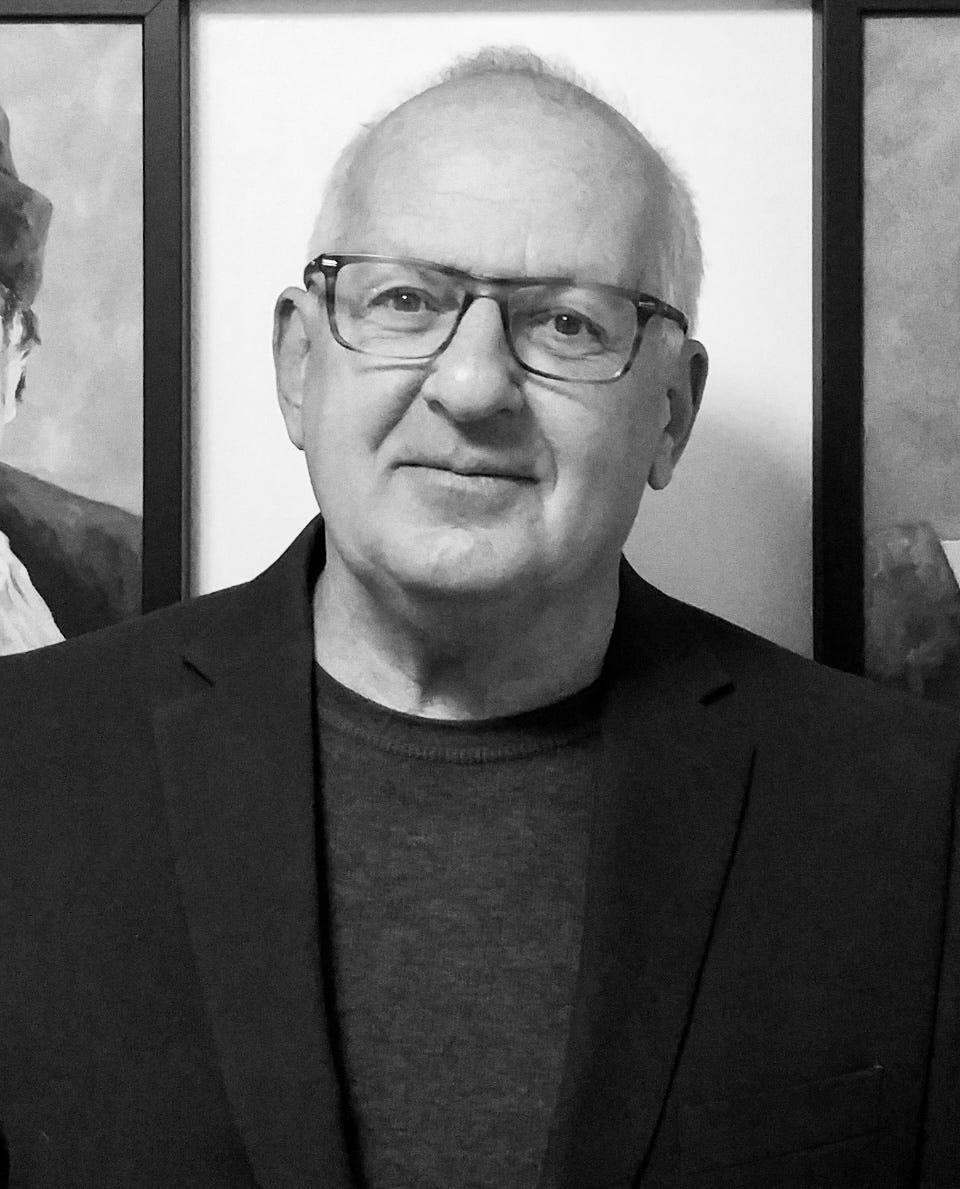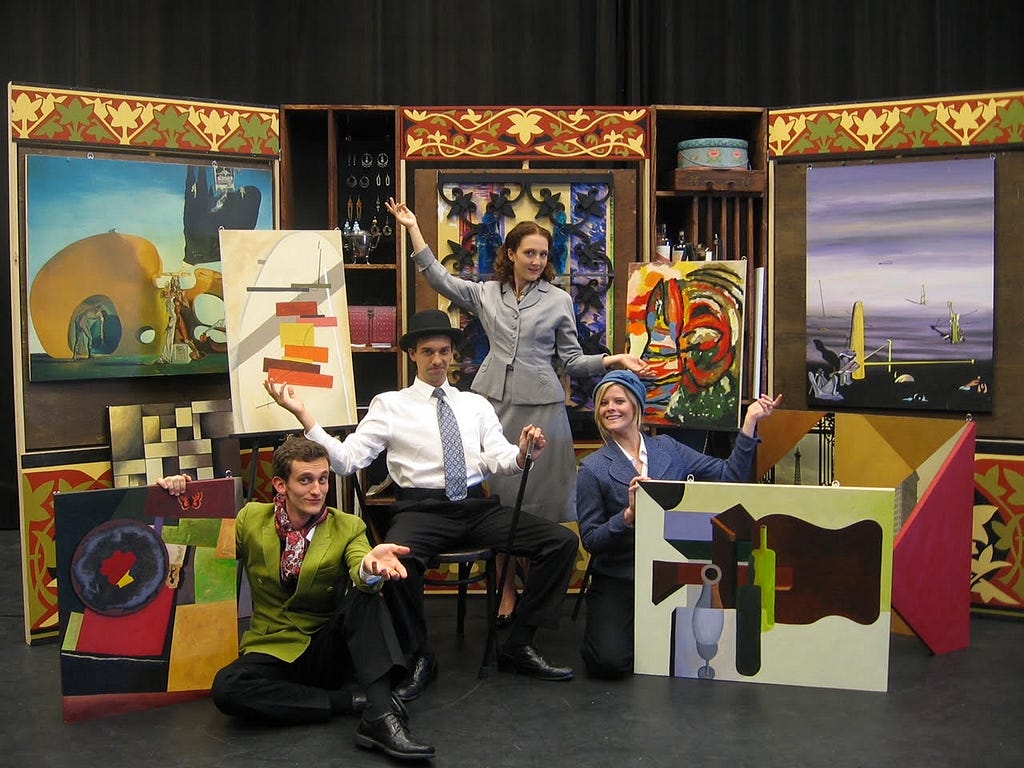
Celebrate the mystery. Playwright Tina Howe says some Navajo blankets contain a hole to enable the mystery to come and go, and writers should attempt to leave things unspoken, a mystery for the reader to solve. The world of gray is so much more fascinating than the world of black and white.
As a part of our series about “5 Things I Wish Someone Told Me When I First Became An Artist,” I had the pleasure of interviewing Al Schnupp.
Al Schnupp is a retired Cal Poly Theatre and Dance Department faculty member in San Luis Obispo, CA. He has designed and directed over eighty plays. He has written a dozen plays; many were produced in regional theatres, university venues, and Off-Off Broadway. He is the author of two novellas, GOODS & EFFECTS and ZERO.
Thank you so much for doing this with us! Can you tell us the story of how you grew up?
Growing up Mennonite included a Sunday morning paint-by-number ritual. Dad, in his black hat, driving. Mother, a white head covered with black strings hanging to the side, never cinched. Grandfather was in the back, by a door, so whenever we stopped, he could undo the latch and spit out a robust ration of black chewing-tobacco
juice. In the plain meeting house, after a general assembly, there was an hour of Sunday School for the children and Bible Lessons for adults, followed
by an hour-long sermon that always mentioned the need of Mennonites to be separate from the world, to fear the wages of sin and to expect the imminent rapture.
Back home, the midday meal was a cut of beef roasted in a nest of vegetables that had been placed in the oven before leaving for church. The Sunday morning blueprint had the contrivance of a Grant Wood painting and resembled a Norman Rockwell scene without the humor, capturing the gentle menacing brushstrokes of a Thomas Hart Benton canvas.
Can you share a story with us about what brought you to this specific career path?
“God is No Fool,” by Lois Cheney, is a book of musing about an irreverent, snarky
God and fickle humans. I marveled at a deity who told his subjects to “shut up,”
who got pissed at argumentative prophets. The structure and content of Cheney’s
meditations had a compelling performance possibility and a powerful visual quality.
Audiences were enthralled when a troupe of actors choreographed and performed the writings. The material was story-based rather than didactic; it was inclusive and not in any way dogmatic. It was our own little version of “Godspell,” without the music. I had found my calling, the theatre, built on rich language that embraced tough topics.
Can you tell us the most interesting story that happened to you since you began your career?
I was fortunate to have dinner with Carol Channing, her husband, and several others. Ms. Channing’s fingers were severely deformed from an advanced case of arthritis, she was unable to hold a utensil. So, a bib was placed around her neck, and she ate with her fingers. No apology. No addressing the circumstances. Just a full-on acceptance of the situation. Throughout the meal, Ms. Channing had no interest in relating her stories; instead, she asked each of the guests, “Now, what is it you do?” This was followed by “Fascinating! How wonderful” and a series of follow-up questions. I sat across from an Academy Award-nominated, Tony Award Winning actress brimming with curiosity and genuine interest in others. I witnessed the giving, inquisitive nature of a true artist.
What are some of the most interesting or exciting projects you are working on now?
Currently, I am exploring ideas for two different plays. Both incorporate the visual arts. “Hanging the Show” features a trio of female artists who are in a gallery, hanging their works, and preparing for the opening. The daughter of one of the artists confronts her mother, which incites a terrible conflict. The second concept features three real-life artists: Alice Neel, Louise Nevelson and Francis Bacon. They are situated at the edge of a slowly revolving disc, each working on a piece of art inspired by an object/figure placed in the center of the circle. Stories that shaped their lives and influenced their vision will be revealed throughout the performance
Who are some of the most interesting people you have interacted with? What was that like? Do you have any stories?
I have interacted with three extremely fascinating women, each an artist and each an activist. One I met personally; the other two I met by researching their lives, writings, and love of art.
A colleague and I interviewed LGBTQ icon Ivy Bottini. Ms. Bottini co-founded the NYC Chapter of NOW. After coming out as a lesbian, Ivy was expelled from the organization by Betty Friedan. Ivy then toured the country with a one-woman show and fought California Prop 6 (An effort to remove gay teachers from the classroom) and California Prop 64 (An effort to require all HIV+ individuals to be registered). She is a visual artist and AIDS activist. When I met Ivy, she suffered from macular degeneration and was nearly blind. She asked me to get within a few inches of her face. After a moment of studying me, she said, “That’s a good face.” Next, she scrutinized the face of my colleague, a female. “That’s a better face,” Ivy said. I wrote a rhyming couplet play about her life (inclusIVitY=the Ivy Bottini Story) presented as a series of songs or poems. It was produced in Central California and at Emerald Theatre in Memphis, TN.
Peggy Guggenheim, an art collector, was married several times, became friends with a vast assortment of American and European writers and painters, had an affair with playwright Samuel Beckett, smuggled her art to America amid World War II, introduced Jackson Pollock to the American art scene, established galleries in London and NYC, and had a tumultuous relationship with her children. I wrote a play about Ms. Guggenheim entitled
THE COLLECTION; featuring a series of 34 brief scenes, showcasing critical episodes in her life. I also duplicated 34 paintings, one per scene, crafting them so that they could be interactive, transformational works of art.
Käthe Kollwitz is a renown German artist and socialist. Three museums in Germany
are devoted to her work which was labeled “degenerate” during the Nazi regime.
My play, CENSORED, features a homosexual student artist, Wendall, who joins a subversive group that makes copies of condemned paintings to save the original ones. He and Käthe become friends and support each other in their causes. The play was produced at The Invisible Theatre in Tucson, AZ.
Where do you draw inspiration from? Can you share a story about that?
I am inspired by artists and playwrights. Mary Zimmerman is my favorite contemporary playwright. She takes classic stories, often Greek myths, and refashions them, giving them a fresh and creative twist. Because she is both writer and director of her plays, she fuses text and action in extremely profound ways.
How have you used your success to bring goodness to the world?
I hope I have been an inspiration and mentor to my students. My novella GOODS & EFFECTS is a celebration of kindness and female empowerment. ZERO, a political satire, is designed to ridicule corrupt politicians and thereby advocate for honest public servants who wish to serve others rather than themselves. Being a gay man, I believe, has amplified my compassion for marginalized people. Being in theatre brings with it an environment that celebrates and embraces inclusion and diversity.

What are your “5 things I wish someone told me when I first started,” and why? Please share a story or example for each.
1. Celebrate the simple. I admire playwrights like Edward Albee, Michael Cristofer, and Mary Zimmerman, who often conclude their works with a simple statement that is utterly profound and stunning. (“Stop” in Three Tall Women; “What do we have but this moment” in The Shadow Box, and “It is not possible to die alone” in The White Snake).
2. Celebrate the mystery. Playwright Tina Howe says some Navajo blankets contain a hole to enable the mystery to come and go, and writers should attempt to leave things unspoken, a mystery for the reader to solve. The world of gray is so much more fascinating than the world of black and white.
3. Celebrate the dichotomy. There is power in recognizing the truth of divergent thoughts. Joni Mitchell looking at clouds, life, and love from both sides. Stephen Sondheim pairing the lyrics “Children will listen” and “Children won’t listen.” The idea that an artist is on a journey to find home.
4. Celebrate absurd humor. Eugène Ionesco and Alfred Jarry were masters at illuminating the absurd aspects of life. I think of phrases like “safe bomb,” “six life sentences, a television anchor signing off saying, “I’ll see you tomorrow night.” What? Really? George Carlin, the comedian, was an insightful observer of the absurd. Don’t overlook the absurd if you wish to combine truth with comedy.
5. Celebrate the third and fourth choice. When solving a problem, the first choice is often a cliché, something to be avoided. It takes “staying-power,” the ability to self-edit and conduct research if one wishes to arrive at original solutions.
You are a person of great influence. If you could inspire a movement that would bring the most amount of good to the most amount of people, what would that be? You never know what your idea can trigger.
Every bill written and passed by the Congress of America must be a “stand-alone” bill. No riders. This would eliminate the undue influence of lobbyists, big business, nepotism, and pork.
Abolish the army as a killing machine. Build an army that is designed to respond to natural disasters, to bring in heavy equipment after an earthquake, fresh water after a flood, and construction workers after a tornado.
We have been blessed that some of the biggest names in Business, VC funding, Sports, and Entertainment read this column. Is there a person in the world or in the US whom you would love to have a private breakfast or lunch with, and why? He or she just might see this.
One table, but four people, please. The group gathered around the lunch table would be the four leads of my play ZERO TO INFINITY, which inspired the novella ZERO. The play is a political satire that calls for excellent comic actors: Bette Midler, Nathan Lane, Alan Cumming, and Jane Krakowski are all on board. We begin by toasting the upcoming Broadway production! After rounds of laughter and rowdy brainstorming, we end with port.
What is the best way our readers can follow you on social media?
http://www.playsanddesigns.com
https://www.instagram.com/al.schnupp
https://www.facebook.com/al.schnupp
This was very meaningful, thank you so much. We wish you only continued success on your great work!
Al Schnupp: 5 Things I Wish Someone Told Me When I First Became An Artist was originally published in Authority Magazine on Medium, where people are continuing the conversation by highlighting and responding to this story.
